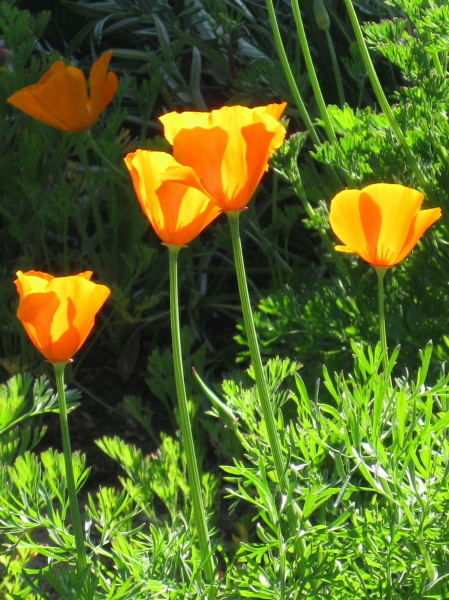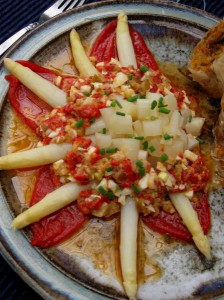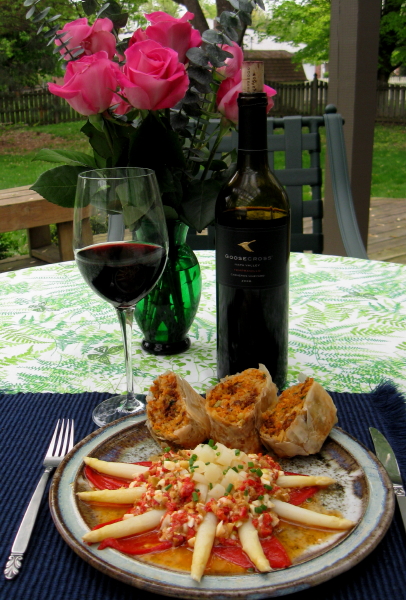Apr 18 2012
Tantalizing Tempranillo
Tempranillo is that wonderful Spanish red wine grape that invokes images of rustic cuisine, tapas and sun-soaked Spanish country-side. The grape uniquely originates in Spain and has seen introduction and increased popularity in the United States. It is a pleasant departure from the readily available Bordeaux and Rhone varietals found throughout Napa Valley.
While available from some wineries, Tempranillo is a challenge to find in Napa Valley. The grape, like Pinot Noir, is early maturing and somewhat temperamental. When found, the Tempranillo grape is often grown on the hilltops of the Carneros American Viticultural Area (“AVA”).
The Carneros AVA sits at the southern end of the valley and is in closest proximity to Napa Valley’s natural air conditioning, the late afternoon marine breezes. Tempranillo does not like hot and dry weather, yet it requires heat to grow. It also needs higher altitude as it can be more acidic if grown at a lower location. Since Tempranillo is an early maturing grape, if attempted to be grown up valley, it would encounter challenges with too much heat during the day, arid conditions and in the early spring, greater chance for frost or colder mornings. The Carneros AVA provides a cooler climate yet with enough early warmth to get Tempranillo started and on its way to harvest. While the region’s temperatures may be close to that of Spain, it still does not offer the exact same climate and while it has hilltops, the altitude is significantly lower. Despite these challenges, a few growers and wineries successfully grow the Tempranillo grape and with some searching, you can find a wonderful Tempranillo bottling for sale in Napa Valley. Further, while Tempranillo is harvested earlier than most red wine grapes, it still produces full-bodied wines that pair wonderfully with a broad spectrum of cuisine.
Goosecross Cellars (“Goosecross”) located in Yountville in Napa Valley has an established relationship with a Carneros AVA grower of Tempranillo grapes. Approximately two years ago, I featured the 2006 vintage of Goosecross’ Tempranillo with much enjoyment and it is with equal delight that I introduce now the 2008 vintage.
Even though the growing season for 2008 was a challenge due to heavy frost in the beginning of the season and later near-drought conditions throughout the summer, the grapes which did survive were intensely flavored. Much to a winemaker’s relief, when there are fewer grapes on the vine and water struggles to reach the fruit, the flavors intensify in the grapes. Despite the low-yield at harvest, the grapes unleash these powerful punches of flavor in the bottle.
As Goosecross’ 2008 Tempranillo meets the glass, aromas of rich fennel, strawberry, black cherry, tobacco and earth ethat merge. Similar lush flavors glide across the palate as the wine is smooth. Despite its texture, tannins are present yet do not overwhelm which gives the wine a recognizable structure. Similarly, there is a pleasant acidity which gives Goosecross’ 2008 Tempranillo unique personality that almost says, “sassy”. Bring on the piquillo peppers, there is a reason why this varietal pairs so well with Spanish fare.
Keeping in line with a Spanish theme, this week’s menu hosts:
1) White Asparagus Piquillo Pepper Salad; and
2) Phyllo-Wrapped Chorizo Fennel Iberico Cheese Tapas.
Native to the Basque region of Spain, white asparagus is a tender sweet vegetable. Increasingly it can be found in local produce sections in the spring in the United States. To create a flavor profile of contrasts, I relied on a recipe authentic to the Basque region of Spain involving piquillo peppers and a home-made vinaigrette. The vinaigrette involves a myriad of ingredients such as piquillo peppers, hard-boiled egg, chopped green olives (which I used my favorite Californian Graber Olives for their rich buttery and nutty flavor), chives and olive oil. This combination creates a very savory dressing as it is flavor packed and vibrant while maintaining a perfect flavorful balance. It is beautiful in the gentle sense that spring is.
When the wine is paired with the salad, it shows its softer feminine side. The Tempranillo seemingly floasts along the palate like soft rose petals of delicate red strawberry fruit. Hints of spice almost drift past like smoke, rendering depth, complexity and sophistication. If you take a sip of wine immediately after a bite of salad, the Tempranillo sends a bright burst of berry fruit across the palate.
While perhaps not a traditional Spanish tapa, phyllo-wrapped chorizo with fennel is satisfactory finger food. Phyllo dough is light and crisps so as to not overwhelm the dish (unlike puff pastry). This allows the subtle soft flavors of fennel, shallot and Iberico cheese to come forth while maintaining a harmonious balance with garden-fresh oregano, chives and chorizo.
The Tempranillo weaves a dance back and forth among the flavors and comfortably rests natively with this dish. The wine readily embraces the spice by mellowing it and contributing its own while sharing rich roasted fruit along the way. When taken together with this dish, the wine’s attributes become more masculine.
Tempranillo can changes so distinctly between these two dishes and shows how affable this varietal can be. It is meant to sit with you over a bevy of tapas and various courses of conversation. Invite it to your table and you will wonder why it does not have a greater presence in your wine cellar.
Comments Off on Tantalizing Tempranillo





